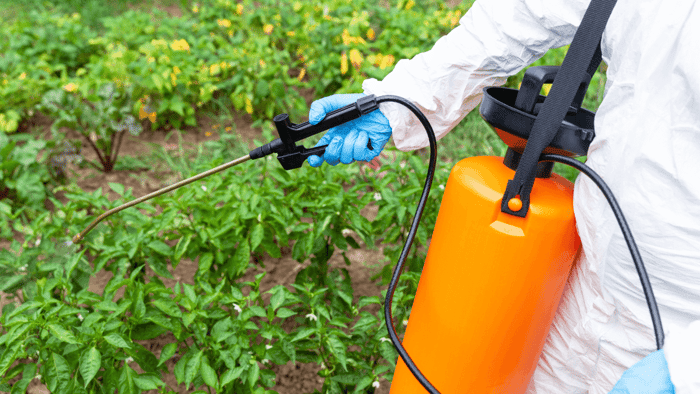Have you been through pregnancy and childbirth? Do you suffer from chronic constipation or bladder inflammation, such as interstitial cystitis? Is sex often painful? Do you experience urine leakage when you laugh, cough, sneeze, or jump?
Ladies, if you can answer some of these questions with a “Yes!” then you may have the extremely common condition called pelvic floor dysfunction or a weak pelvic floor.
Wait, a weak what?
Let’s face it—most of us ladies don’t even know that we have a pelvic floor until we give birth and start suffering from the fact that “things are feeling different down there,” and even then, we don’t talk about said feelings and pain, leakage accidents, or our pelvic floor in general. And most still don’t know what it really is and what is going wrong when these symptoms arise.
Strong pelvic floor muscles also relate to your overall well-being, and pelvic floor dysfunction even can cause a host of issues that are actually completely within your control to correct.
Pelvic floor therapy is so much more than just Kegel exercises, and that’s why Be Vivid You sat down with an expert to get all the details, expel the myths, and learn how to properly strengthen the pelvic floor.

Sonja Bennett is a mom of three and passionate about pelvic floor training. Originally from Germany, Sonja boasts a master's degree in physical education and sports science. She’s an entrepreneur in health, fitness, and weight management and has been helping women to strengthen their pelvic floors for over a decade. Just recently, Sonja launched her brand new online program, Pelvic Floor Training, which dives into the nitty gritty of pelvic floor function, misconceptions, and teaches women how to regain control of their health by strengthening this extremely powerful—yet often forgotten—group of muscles.
Kira Poletis [KP]: Thanks for chatting with us, Sonja! BVU has a wide reader base of moms who probably relate to your story. How did you get started with pelvic floor training?
Sonja Bennett [SB]: Well first, let me ask permission to be 100% Sonja—which means I say things the way they are, without sugarcoating any of it!
KP: Haha, please do!
SB: Then here we go! Health and fitness have always been a big part of my life and I consider myself both healthy and fit, however, after I gave birth to my first child, I didn’t understand what was going on with my body. I peed myself in the most embarrassing moments, had the feeling that my bladder hung out of my vagina, and sex wasn’t pleasant, but painful.
I couldn’t believe that there wasn’t a class I could go to in order to strengthen these “loose muscles down there” and feel put together again. In my home country, it’s the most normal thing to do after giving birth, but nothing like this existed here in the States. I was constantly being told, “Just make sure you do your Kegels and you’ll be fine. If not, you can always have surgery when you’re done having kids.”
I didn’t like these answers at all! So, I decided to change this. By the way, I did do my Kegels—they didn’t change a thing.
I decided to specialize in pelvic floor training and went back to Germany to learn from the best.
KP: Amazing, you took charge of your own health and started with education! So what are some symptoms that women may be experiencing as a result of a weak pelvic floor, but may not even realize it?
SB: Believe it or not, the origin of many headaches, neck, knee, and back pain comes from a weak pelvic floor. And then of course symptoms like not being able to control the bladder or bowels, having the feeling of being “open” down there, feeling that there is something in the vagina that doesn’t belong that low, and of course, the well-known and totally disliked “mommy pooch.”
Let me just finish this answer by saying that peeing yourself is NOT part of being a woman, it doesn't just “come with motherhood,” and the mommy pooch is actually very often due to ab separation, not just “pregnancy leftovers.”

KP: What are some things that strengthening your pelvic floor can help with?
SB: All of the above! And that is no joke! If you suffer from back pain, stop blaming your couch or your mattress and start training your pelvic floor and learn how to really improve your posture. If you struggle with headaches, stop popping painkillers and start pelvic floor training.
If you suffer from stress incontinence, strengthen your pelvic floor.
If you suffer from ab separation, strengthen your pelvic floor.
If you suffer from the early stages of prolapse issues, strengthen your pelvic floor.
And lastly, women with low self-esteem or who struggle with depression and anxiety very often have an extremely weak pelvic floor. I was actually one of them and pelvic floor training changed everything for me, which is why I’m so passionate about it. It’s a very simple but super efficient training and most of my clients can feel a significant change after three to four weeks.
KP: What are some misconceptions about training the pelvic floor that drive you crazy?
SB: The thing that really drives me crazy more than the myths is the fact that no OB/GYN tells you during, or at least after, pregnancy that you need to become aware of your pelvic floor and learn how to strengthen and relax it. I guess prolapse surgery must be really lucrative for them.
And then of course tips like “love balls will strengthen your pelvic floor” or “the peepee-stop” (which means you hold your pee while you’re peeing) that train your body completely wrong.
There are so many myths out there because women are desperately trying to fix themselves but don’t know who, or what, to ask. So they experiment. Or they look for pelvic floor physical therapy, which honestly is a fantastic start. The problem there is that a 6-week therapy course won’t “fix” it. In my opinion, and this is how I designed my training, women need to be guided to make “pelvic floor friendliness” an entire lifestyle change.
KP: Why do you think education around the pelvic floor is so lacking? It seems like if you asked any woman on the street about it, the most prevalent thing you’ll hear is just about Kegels.
SB: I believe there are many reasons. One is definitely that girls from a very young age are being told that talking about “down there” is bad. Therefore, many women choose to suffer in silence instead of breaking that taboo. But then again, if you don’t really know who to ask and where to find the right answers, it’s “easier” to just accept it.
My answers to your second question support this even more because it shows how many health concerns could be improved with pelvic floor training, which would definitely impact some big businesses.
KP: What are some ways women can start strengthening and caring for their pelvic floor at home?
SB: A big topic is bathroom behavior, and when I say this, I actually mean how you sit on the toilet and what you do on the toilet. Do NOT blow your nose as you’re peeing!!
Another tip—open up your abdominal cavity by sneezing over your shoulder, instead of crossing your legs and crunching over and putting unneeded stress on your pelvic floor.
Of course, gut health also plays into pelvic floor health, how much water you drink, how much fiber you take in, and how nutritious your meals are. I constantly share tips on what you can do to strengthen your pelvic floor on Facebook and TikTok, so following me on those platforms is a great start to your education.
KP: Is it ever too late to start strengthening your pelvic floor? Or too early?
SB: It’s never too late to start! As a matter of fact, most of my clients are in their 40s and 50s, some even in their 60s. They're so appreciative and absolutely love what I teach.
But of course, it would be best to start before you feel any kind of issues, in a preventative way. My children all know that they have a pelvic floor and how they can feel it, even my son, and my youngest girl is six. So no, it’s never too early to spread awareness and make these conversations normal.
Incontinence, discomfort, and low self-esteem don’t have to be things you just deal with as you age and your body goes through big changes. As Sonja has taught us today, it all starts with education. We hope this interview has empowered you to take charge of your health and have the courage to make those lifestyle changes to support a healthy and strong pelvic floor—and a confident, flourishing life!
Want to know everything going on in natural health and beauty? Sign up for BVU's newsletter. You can also follow along on Instagram and Facebook.




